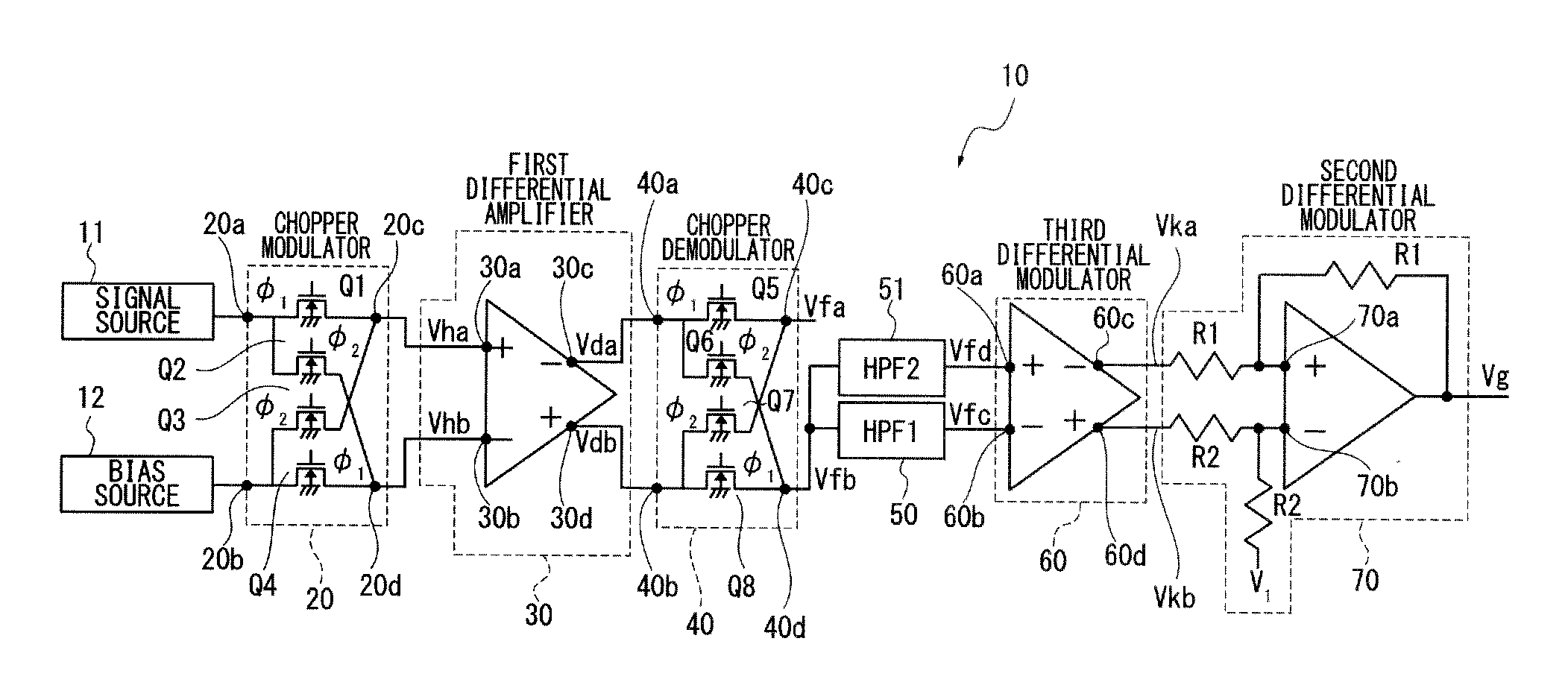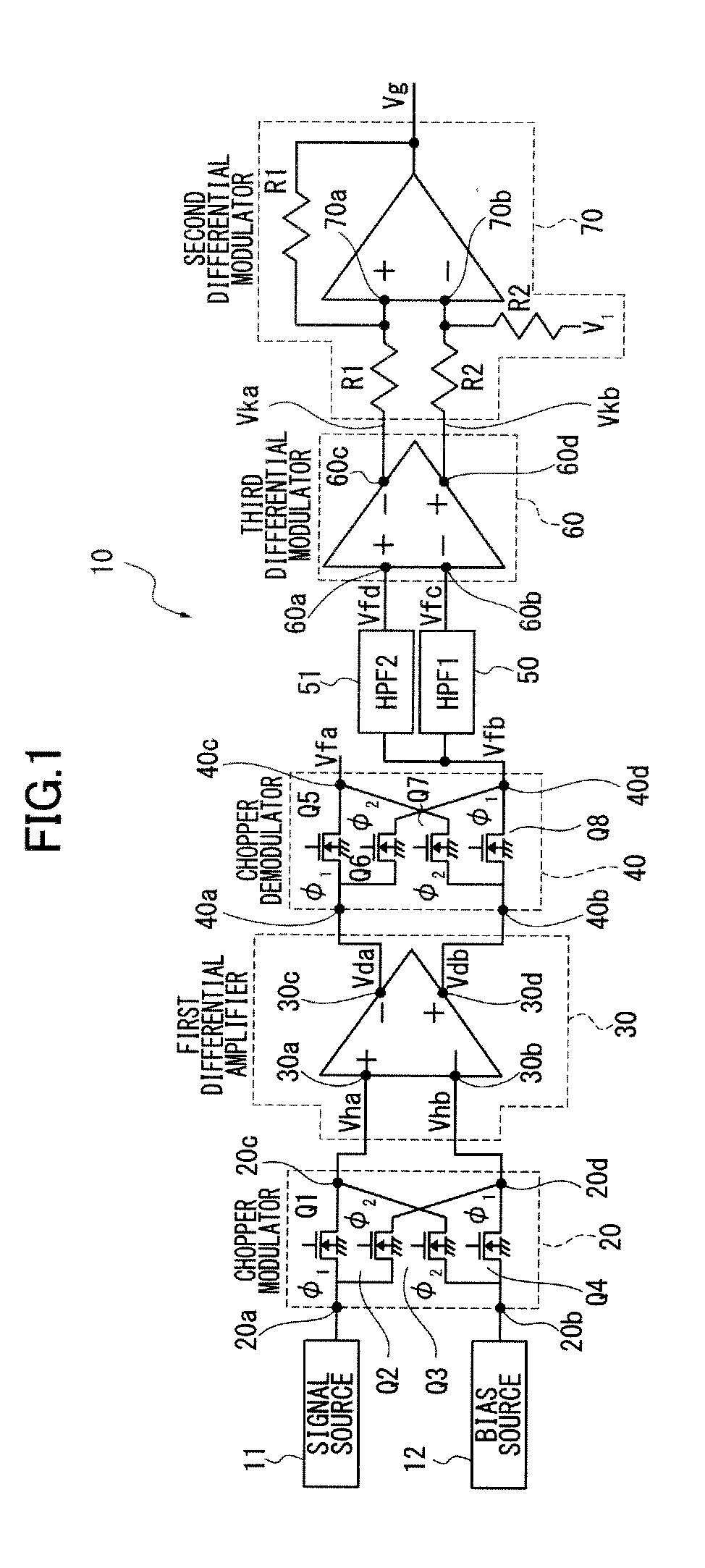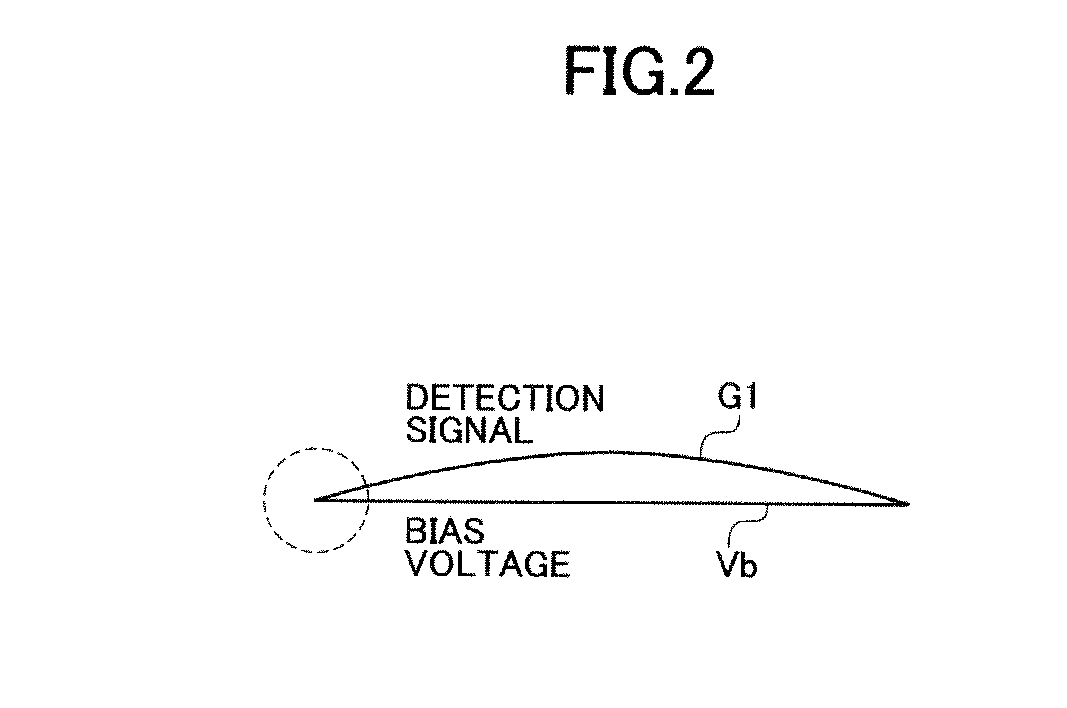Chopper amplifier
- Summary
- Abstract
- Description
- Claims
- Application Information
AI Technical Summary
Benefits of technology
Problems solved by technology
Method used
Image
Examples
first embodiment
[0026]FIG. 1 shows the structure of a chopper amplifier 10. The chopper amplifier 10 comprises a chopper modulator 20 to modulate a detection signal from a signal source 11 and a bias voltage as a certain DC voltage from a bias source 12 and a differential amplifier 30 to differentially amplify a voltage or chopper modulation signal output from the chopper modulator 20.
[0027]The chopper amplifier 10 further comprises a chopper demodulator 40 to demodulate a differential output voltage from the first differential amplifier 30 and output a demodulation signal, first and second highpass filters 50, 51 to cut off a low frequency component of the demodulation signal from the chopper demodulator 40 and output a modulation signal, a third differential amplifier 60 to differentially amplify the modulation signal from the highpass filters 50, 51, and a second differential amplifier 70 to differentially amplify a differential modulation signal from the third differential amplifier 60.
[0028]Th...
second embodiment
[0055]Another example of first and second highpass filters are described referring to FIG. 4. First and second highpass filters comprise capacitors C1, C2 and MOS transistors Tr1, Tr2, respectively.
[0056]The cutoff frequency of the first highpass filter needs to be set to a low value due to the low frequency band of the detection signal G1. For example, considering the capacitance and resistance of a 1st order highpass filter with cutoff frequency of 1 Hz, when capacitance is set to 1 pF, the highpass filter requires resistance of 160 GΩ. In general a resistance of 160 GΩ made of a polysilicon element on a semiconductor substrate requires an enormous area.
[0057]In view of this, to realize a highpass filter with a smaller area and a low cutoff frequency, a very large-resistance element can be formed by setting a gate-source voltage Vgs of the MOS transistor Tr1 to a threshold voltage or less. This is because the smaller the voltage Vgs, the larger the resistance the MOS transistor Tr...
PUM
 Login to View More
Login to View More Abstract
Description
Claims
Application Information
 Login to View More
Login to View More - R&D
- Intellectual Property
- Life Sciences
- Materials
- Tech Scout
- Unparalleled Data Quality
- Higher Quality Content
- 60% Fewer Hallucinations
Browse by: Latest US Patents, China's latest patents, Technical Efficacy Thesaurus, Application Domain, Technology Topic, Popular Technical Reports.
© 2025 PatSnap. All rights reserved.Legal|Privacy policy|Modern Slavery Act Transparency Statement|Sitemap|About US| Contact US: help@patsnap.com



